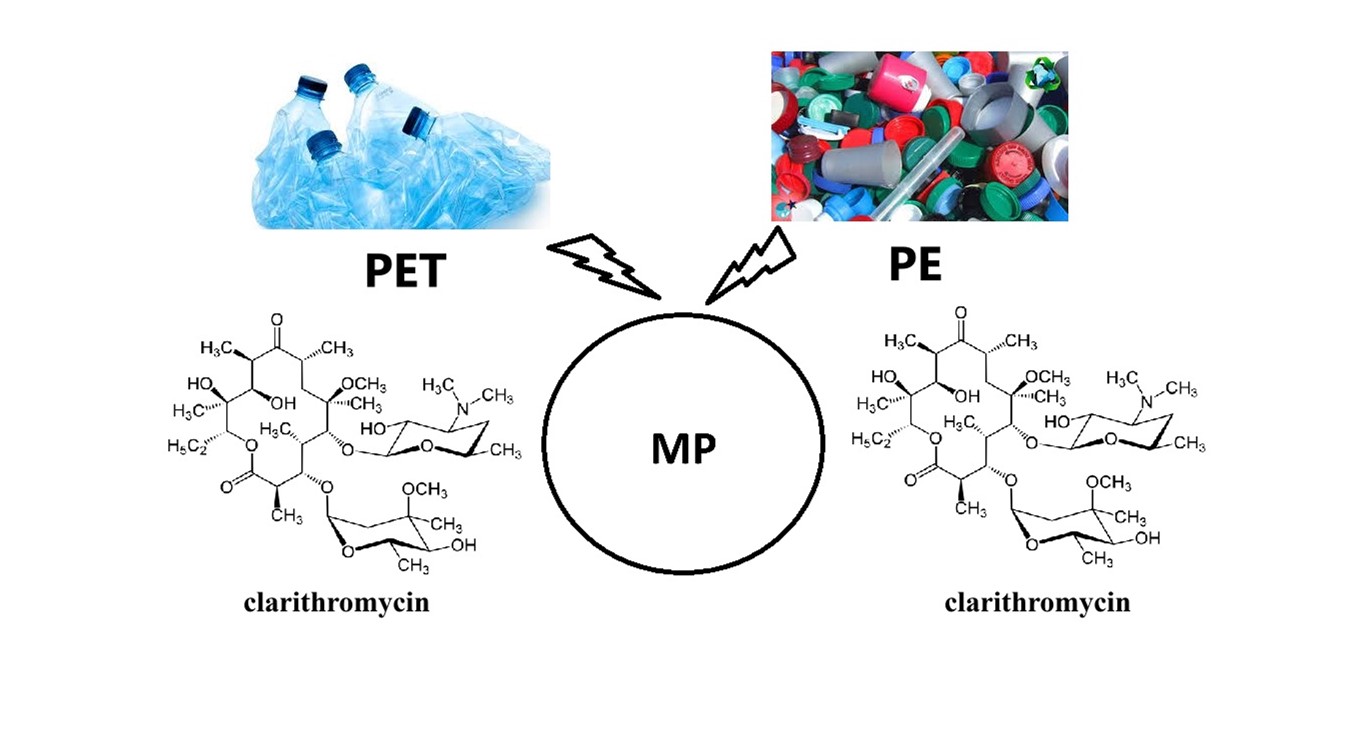
AIn this study, it was aimed to investigate the potential of microplastics (MPs) to adsorb antibiotic clarithromycin (CLAR) in the water media. For this purpose, two of the most common used plastics; polyethylene terephthalate (PET) and polyethylene (PE) were selected. Batch adsorption experiments were performed under various conditions, i.e., pH, and ionic strength of the solution, type and dimension of MPs. Liquid chromatography equipped with mass spectrophotometry (HPLC-MS) was used for the analysis of CLAR. Fourier Transform Infrared Spectrometry (FT-IR) analysis of adsorbents was performed before and after CLAR adsorption.
Results of the experimental studies showed that the adsorption reached the highest value at pH 6-7. Equilibrium adsorption time was 240 min. The adsorption occurred in accordance with pseudo-second-order kinetics. The experimental qe values for CLAR adsorption of <2 mm PET-MPs; <5 mm PET-MPs; <2 mm PE-MPs and <5 mm PE-MPs were 0.33 mg/g, 0.26 mg/g, 2 mg/g, and 0.2 mg/g, respectively. It was determined that adsorption with <2 mm PE-MPs fits the Langmuir isotherm model (r2=0.95), while adsorption with <2 mm PET-MPs (r2=0.74) and <5 mm PET-MPs (r2=0.83) fit the Freundlich isotherm model. The findings revealed that CLAR was adsorbed by all tested PET-MPs and PE-MPs, that poses an accumulation and transportation risk in the aquatic environment.
Total file downloads: 15